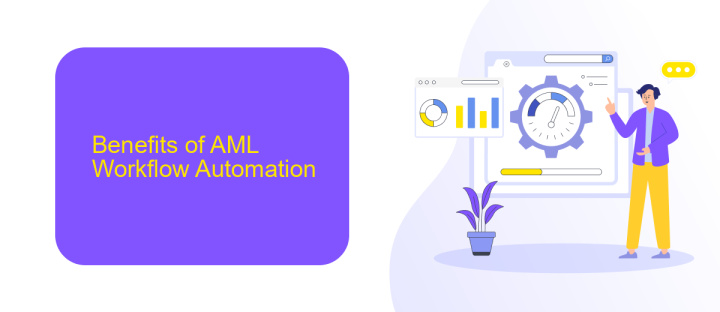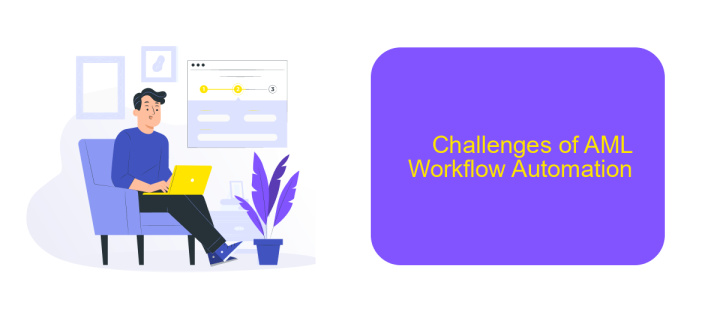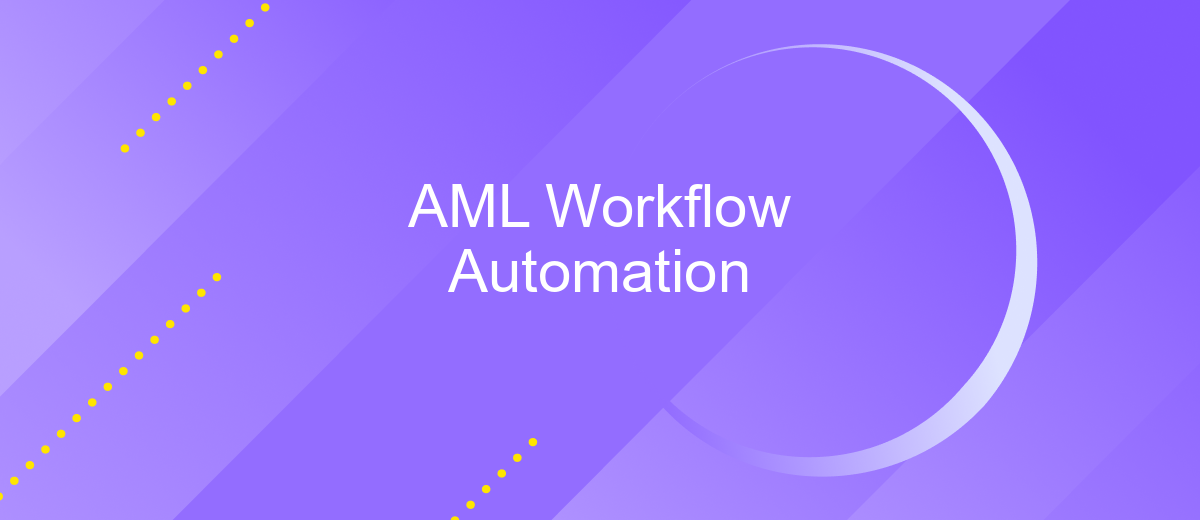AML Workflow Automation
In the ever-evolving landscape of financial regulations, Anti-Money Laundering (AML) compliance remains a critical priority for institutions worldwide. AML workflow automation emerges as a powerful solution, enhancing efficiency and accuracy in detecting and preventing illicit activities. This article explores the benefits, implementation strategies, and technological advancements driving the future of AML compliance through automated workflows.
Introduction
The automation of Anti-Money Laundering (AML) workflows is becoming increasingly crucial in today's financial landscape. With the rise of sophisticated financial crimes, traditional manual processes are no longer sufficient to detect and prevent illicit activities. Automation not only enhances the efficiency of AML operations but also significantly reduces the risk of human error.
- Streamlined data collection and analysis
- Real-time monitoring and alert generation
- Automated reporting and documentation
- Integration with existing financial systems
One of the key components in AML workflow automation is the seamless integration of various data sources and systems. Services like ApiX-Drive facilitate this by providing robust tools for connecting different software applications without the need for extensive coding. This ensures that all relevant data is aggregated and analyzed in real-time, enabling financial institutions to stay ahead of potential threats. By leveraging such technologies, organizations can enhance their compliance efforts and focus on more strategic tasks.
Benefits of AML Workflow Automation

Implementing AML workflow automation significantly enhances the efficiency and accuracy of compliance processes. By automating repetitive and time-consuming tasks, organizations can reduce human error and ensure that all necessary checks are performed consistently. This not only speeds up the AML process but also allows compliance teams to focus on more complex and high-risk activities, ultimately improving the overall effectiveness of the AML program.
Moreover, AML workflow automation facilitates seamless integration with various data sources and third-party services. Tools like ApiX-Drive enable organizations to easily connect their AML systems with other platforms, ensuring real-time data synchronization and streamlined operations. This integration capability helps in maintaining up-to-date information and supports more informed decision-making. As a result, businesses can achieve better compliance, reduce the risk of regulatory penalties, and enhance their reputation in the financial industry.
Process of AML Workflow Automation

Automating the Anti-Money Laundering (AML) workflow is a critical step towards enhancing compliance and operational efficiency. The process involves several key stages to ensure a seamless and effective implementation.
- Data Collection: Gather data from various sources including customer information, transaction records, and external databases.
- Data Integration: Use integration services like ApiX-Drive to connect disparate data sources and streamline data flow into a unified system.
- Risk Assessment: Apply automated risk assessment algorithms to evaluate the likelihood of money laundering activities.
- Monitoring and Detection: Implement continuous monitoring systems to detect suspicious activities in real-time.
- Reporting and Compliance: Automatically generate and submit reports to regulatory authorities to ensure compliance with AML regulations.
By following these steps, organizations can significantly reduce the manual workload associated with AML processes, allowing compliance teams to focus on more strategic tasks. Tools like ApiX-Drive facilitate seamless integration and data flow, making the entire automation process more efficient and reliable.
Challenges of AML Workflow Automation

Automating AML (Anti-Money Laundering) workflows presents several challenges that organizations must address to ensure compliance and efficiency. One primary issue is the complexity of integrating various data sources and systems, which often results in data silos and inconsistent information.
Another challenge is maintaining the accuracy and timeliness of data. Automated systems must be regularly updated to reflect the latest regulatory changes and financial crime patterns. Additionally, ensuring that the system can handle false positives without overwhelming compliance teams is critical.
- Integration with multiple data sources
- Maintaining data accuracy and timeliness
- Managing false positives
- Ensuring scalability and flexibility
- Compliance with evolving regulations
Services like ApiX-Drive can help streamline the integration process by connecting various applications and data sources, thereby reducing data silos and enhancing workflow efficiency. However, organizations must continuously monitor and adjust their AML automation strategies to keep pace with regulatory changes and emerging threats.


Future of AML Workflow Automation
The future of AML workflow automation promises to revolutionize the way financial institutions handle compliance and regulatory requirements. With advancements in artificial intelligence and machine learning, these systems will become increasingly sophisticated, capable of detecting complex patterns and anomalies that human analysts might miss. This will not only enhance the accuracy and efficiency of AML processes but also reduce the risk of human error, ensuring that financial operations remain secure and compliant with ever-evolving regulations.
Furthermore, the integration of AML systems with other financial software and databases will become more seamless, thanks to services like ApiX-Drive. ApiX-Drive facilitates easy integration between various platforms, allowing for real-time data exchange and automated workflows. This will enable institutions to quickly adapt to new regulatory changes and streamline their AML processes without the need for extensive manual intervention. As a result, financial organizations will be better equipped to combat money laundering and other financial crimes, ensuring a safer and more transparent financial ecosystem.
FAQ
What is AML Workflow Automation?
What are the benefits of automating AML workflows?
How can I integrate AML Workflow Automation into my existing systems?
What are the key features to look for in an AML Workflow Automation tool?
Is AML Workflow Automation suitable for small businesses?
Apix-Drive is a universal tool that will quickly streamline any workflow, freeing you from routine and possible financial losses. Try ApiX-Drive in action and see how useful it is for you personally. In the meantime, when you are setting up connections between systems, think about where you are investing your free time, because now you will have much more of it.

